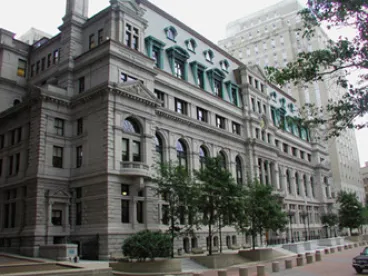In April of 2015, we reported on an interesting Massachusetts Superior Court decision, Kain v. MassDEP, upholding the actions to date of the Massachusetts Department of Environmental Protection (“MassDEP”) under the Global Warming Solutions Act to enact regulations establishing declining annual emission limits for greenhouse gases (“GHGs”). As we discussed at that time, MassDEP’s actions were challenged as inadequate, and the trial court upheld the agency’s steps to date, in the process granting an unusual amount of deference to MassDEP in rendering its decision. To review that article and to access a copy of the trial court’s decision, click here. In October of 2015, the Massachusetts Supreme Judicial Court agreed to hear a challenge to the trial court’s decision brought by the Conservation Law Foundation (“CLF”).
In a press release, CLF claims that MassDEP has failed to implement the GHG reduction requirements in the Global Warming Solutions Act. By filing its appeal, CLF seeks to force MassDEP to issue regulations that will accomplish a steady pace of specific declining GHG emission limits on a broad category of emissions sources in Massachusetts in order to achieve a 25% GHG emission reduction by 2020 and an 80% GHG emission reduction by 2050, as mandated by the Act. At the trial court level, the MassDEP and the state Attorney General’s office had argued that the Act’s GHG reduction provisions were merely “aspirational” and were not directives.
This appeal raises two fascinating issues. First, the Trial Court conducted a truncated review of the statute for purposes of establishing to what extent it would defer to the agency’s position, and seemed to default to a conclusion that it must defer to MassDEP on its interpretation of the Act. This seemingly ignored substantial administrative law and statutory construction precedent and provided the foundation on which the Court upheld MassDEP’s actions. It will be interesting to see how the Supreme Judicial Court addresses the statutory construction question, and whether it is willing to agree that MassDEP is in fact entitled to substantial deference. All the more interesting, this review occurs at the same time when the similar federal statutory construction framework is being questioned in a series of cases, with many observers speculating that the U.S. Supreme Court is moving towards changing the established precedent and limiting the amount of discretion that is customarily afforded to federal agencies, most notably the U.S. Environmental Protection Agency.
Second, there is the substantive question of what the Global Warming Solutions Act actually requires of MassDEP, and how comprehensive its GHG reduction rules must be. The Plaintiffs argued to the Trial Court that the Act was very specific, imposing a mandate on MassDEP to establish rules that adopt declining annual aggregate GHG limits (and not merely reduction targets) on GHG sources or categories of sources. MassDEP argued that the Act only imposed “aspirational” or “target” emissions goals. The Trial Court sided mostly with MassDEP, holding that the Act provided general guidance, leaving much to the discretion of MassDEP, and that the regulatory actions MassDEP had adopted to date were reasonable and not an abuse of its discretion. To the Trial Court, MassDEP had “substantially satisfied” the requirements of the Act, and that was sufficient.
Whether the Supreme Judicial Court will agree that MassDEP has substantial discretion in this area is not yet known, If the Trial Court’s position is upheld on appeal, MassDEP’s incremental approach to adopting GHG controls will continue. If the Trial Court’s position is overturned, it is likely that MassDEP will be ordered to adopt regulations that contain more aggressive annual GHG reduction limits. This will certainly be a very interesting case to watch as it continues to unfold.



 />i
/>i

